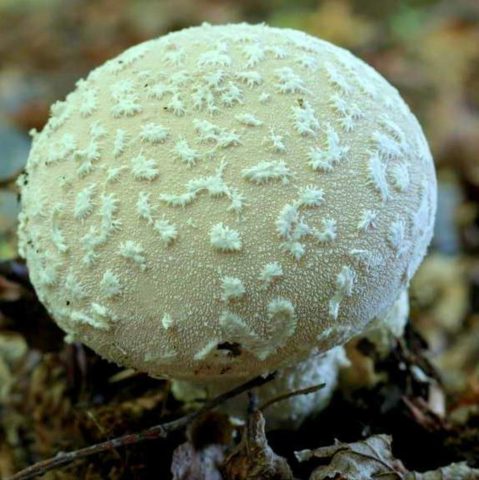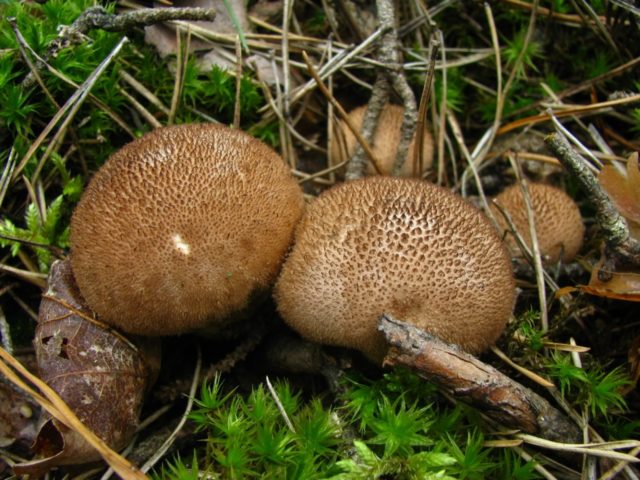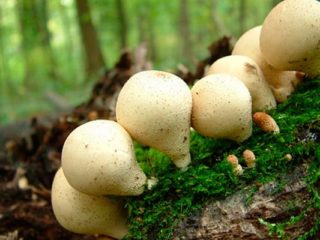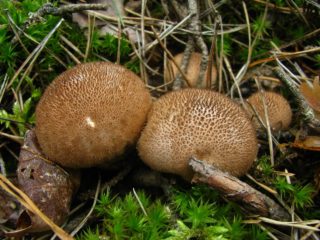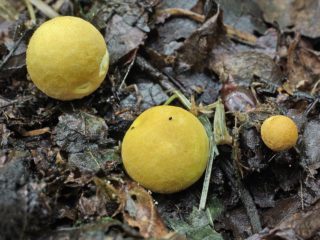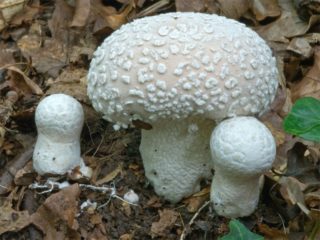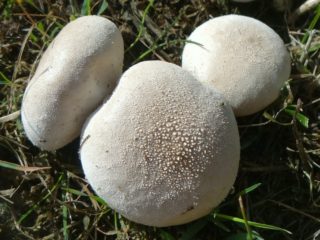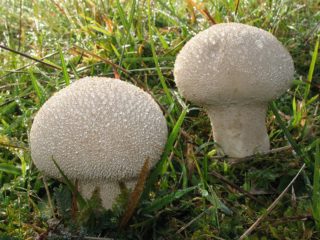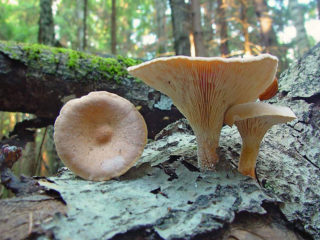Content
The puffball is black-prickly, needle-like, thorny, hedgehog - these are the names of the same mushroom, which is a representative of the Champignon family. In appearance, it can be confused with a small shaggy bump or hedgehog. The official name is Lycoperdon echinatum.
What a black-prickly raincoat looks like
He, like many of his relatives, has a back-pear-shaped fruiting body, which tapers at the base and forms a kind of short stump. The surface of young specimens is light, but becomes light brown as they mature.
The diameter of the upper part reaches 5 cm. It is completely covered with bent spikes-needles 5 mm long, which are arranged in rings. Initially, the growths are creamy and then darken and turn brown. During the ripening period, the thorns slide off, exposing the surface and leaving a mesh pattern. At the same time, a hole is formed in the upper part through which the mushroom releases ripe spores.
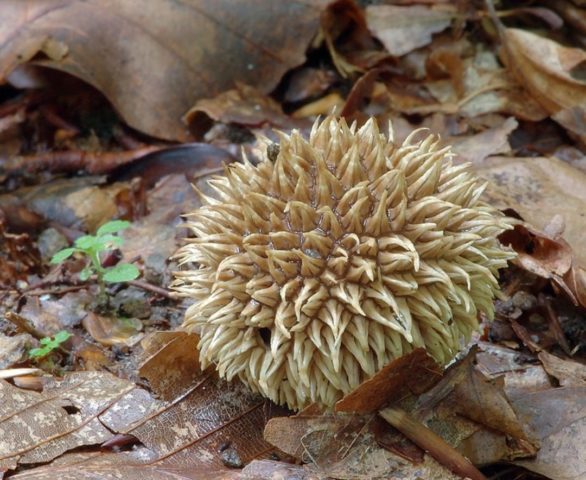
The thorns of the black-prickly raincoat are arranged in rings, in the center is the longest, and around the short
The pulp is initially white in color, but when ripe, it turns purple or brownish-purple.
At the base of the fungus, you can see a white mycelial cord, thanks to which it is firmly held on the soil surface.
Spherical spores with characteristic spines on the surface. Their size is 4-6 microns. The spore powder is initially creamy in color, and when ripe changes to a purplish brown.
Where and how it grows
This mushroom is classified as rare. The fruiting season begins in July and lasts until the end of October if conditions are favorable. Grows singly or in small groups. It is found in deciduous forests, as well as in heather wastelands in highlands.
Prefers calcareous soil. Distributed in Europe, Africa, Central and North America.
Is the mushroom edible or not
The puffball is edible as long as its flesh is white. Therefore, it is recommended to collect especially young mushrooms. In terms of nutritional value, they belong to the fourth category.
Before use, it must be boiled or dried. The black-prickly raincoat does not tolerate long-distance transportation, so it should not be assembled if you are planning a long walk through the forest.
Doubles and their differences
In appearance and description, the spiny-prickly raincoat is in many ways similar to its other relatives. Therefore, in order to identify twins, you need to know their characteristic differences.
Similar twins:
- The raincoat is ragged. The surface of the fruiting body is covered with cotton-like white flakes. The main color is light cream or ocher. Considered edible. Grows in the southern regions, found in oak and hornbeam forests. The official name is Lycoperdon mammiforme.
The ragged raincoat is considered one of the most beautiful representatives of the Champignon family.
- The smelly raincoat. Common view. A distinctive feature is the dark color of the fruiting body with brown curved thorns that form star-shaped clusters. Young specimens give off an unpleasant odor that resembles light gas. Considered inedible. The official name is Lycoperdon nigrescens.
A smelly raincoat should not be eaten even at an early age, when the pulp is white
Conclusion
The spiny-prickly raincoat has an unusual appearance, thanks to which it is difficult to confuse it with other relatives. But if in doubt, break the pulp. It should have a pleasant aroma and a dense white texture. When collecting, it should be borne in mind that this species cannot be worn for a long time in a basket.
